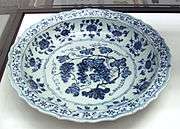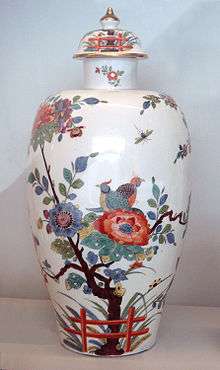Ding ware

Ding or Ting ware (Chinese: 定瓷, Dìngcí) were porcelain ceramics produced in the prefecture of Dingzhou (formerly romanized as "Ting-chou") between the late Tang and Later Jin dynasties of imperial China.
It is famous for the ivory-white or creamy-white color of the majority of its products, although it also produced lines in other glazes, using varied techniques. The range and output of the wares was large, producing ceramics of high quality for the wealthy merchant class and the scholar-literati class, as well as tributary ceramics of the highest quality for the imperial court.
Ding porcelain had already become highly desirable during the Song Dynasty, due to its subtle hues and refined form. It inspired some of the early porcelain of Jingdezhen and other kiln complexes during the Ming and Qing dynasties.
External links
- A Handbook of Chinese Ceramics from The Metropolitan Museum of Art

